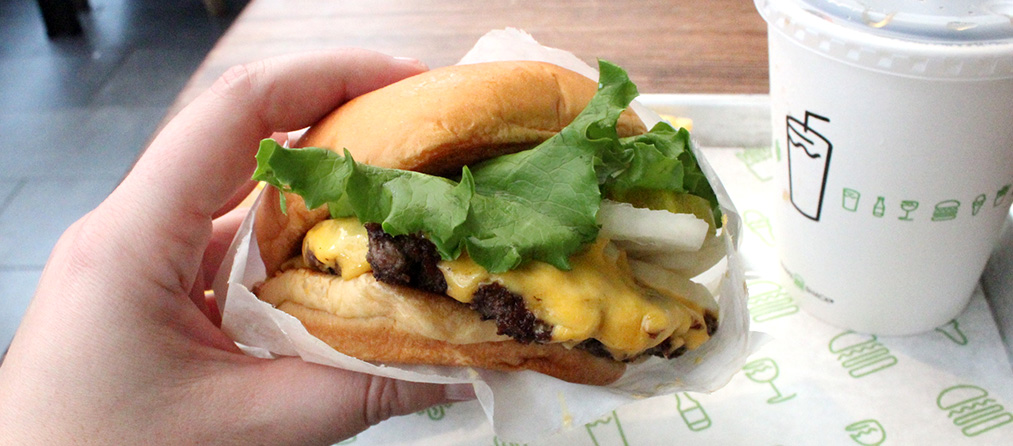From the notorious Cronut to the new Ramen Burger on the scene: New York is brimming with trends and hybrids of familiar foods striving to become the 'next big thing' to attract the crowds. We've gathered a list of the most notable trends and we ventured out to taste them all. So next time you're in New York, which places are a must and which should you give a miss? Recommendations ahead.
New York is one of the world's culinary capitals – it boasts a rich concentration of upscale Michelin-star restaurants, food trucks serving exotic dishes, and generally speaking, a lot of good food. Yet being New York, good food alone is never enough; there is a constant search for the next big thing. In a giant city like New York with millions of restaurants, culinary establishments are launched incessantly in an attempt to rise above the rest and attract addicted foodies, who make the pilgrimage to their favorite restaurant as if it were a temple of food and not merely another food stand serving oily food. From Ramen Burger to the Cronut – gimmicks and trends inundate the city and compete with each other over who brandishes the longer line of customers, or who is more frequently tagged on Instagram.
And let's talk about these lines. New Yorkers are quite fond of standing in line and they don't whine about it at all, even if it means waking up at 6am to buy some carbohydrates as if they were living in Soviet Russia. So to avoid waiting in line in vain and wasting time for no good reason, they play Candy Crush to kill time until the long-awaited dish is served. We gathered the hottest trends in the Big Apple, we sacrificed our figures, we ate our way through them all, and we've returned with recommendations:
Cronut
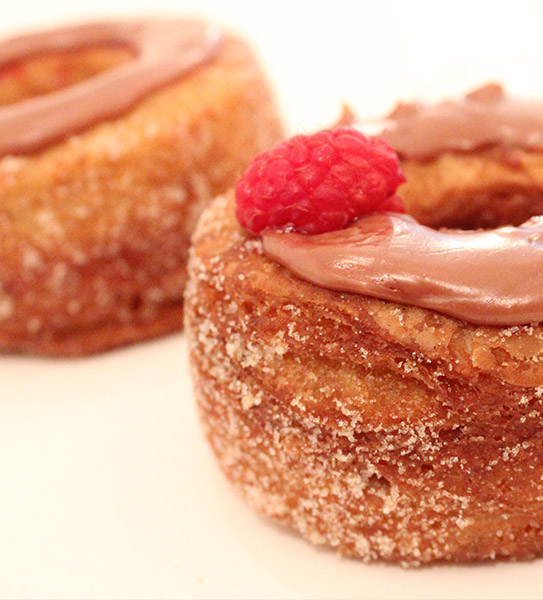
French Chef Dominique Ansel is some kind of marketing genius, and his business plan should be taught at the finest schools of economics and business management. In the spring of 2013, Ansel invented the Cronut
The Cronut is a particularly decadent hybrid of a croissant and a donut consisting of fried croissant dough with a sugary glaze and a variety of fillings. The Cronut was a huge overnight success, and an incredibly long line started to form every morning outside Ansel's small bakery in Soho. Ansel announced that he can only produce a limited number of pastries, and as they become stale quickly, they only sell a few hundred thousand Cronuts a day. Most of the supply is sold out by 10am. Due to ridiculously high demand, there is a limit of two Cronuts per customer, which ultimately spawned a frenzied black market for the fried carbohydrate. Ansel doesn't let anyone cut corners, not even celebrities. Rumors circulated that Mariah Carey tried to order some Cronuts for a party and was declined. She sent about four personal assistants to stand in line from 5am, and even paid homeless people to stand in line to bring Mariah the buttery pastry
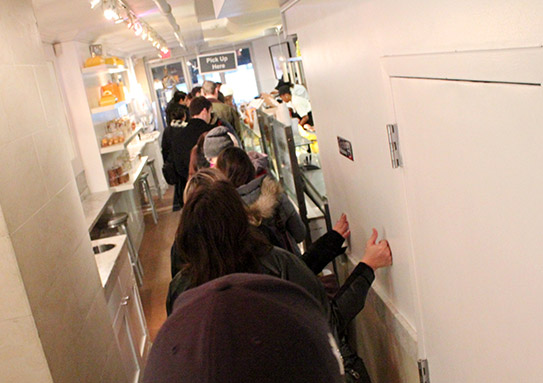
But the burning question was, is the hype justified, or are Americans once again blindly following a trend like sheep? We got up at 6am to ascertain what it is behind this crossbreed that has caused such frenzy for thousands of people. We arrived at the bakery shortly after it opened, and despite expecting painfully long lines, the line was actually quite short (there are two lines – one for the Cronut, and one for everything else). We stood there salivating over the impressive, appetizing display of creative desserts. When we finally reached the cashier, we bought two Cronuts and a DKA pastry that had become the bakery's next trend. We sat at a table situated on the premises, we ceremoniously opened the box, and we discovered the flavor that we'd received. Ansel changes the Cronut flavor every day, and every day is greeted with a different filling or glaze – customers cannot choose the flavor. We happened upon a Cronut filled with strawberry jelly topped with a ganache glaze. The first bite was heavenly. It was like biting into a sweet cloud, and it was probably the jelly that reminded us of simple, traditional donuts, but in a good way. The following bites brought on some serious sugar overload. The pastry was less crispy than we'd expected, and was more reminiscent of a donut than a croissant. The DKA pastry, on the other hand, was a very pleasant surprise: crispy, not too sweet, and just the right size.
Cost-of-living: The Cronut costs $5. Other pastries cost $3-$7.
Where in the Big Apple: 189 Spring St.
Time killed playing Candy Crush: We waited for a total of about 15 minutes. It's best to come early on a rainy day to reduce the chance of having to wait in line (the bakery opens at 8am).
Procession of imitations: Ansel trademarked the name Cronut. Many bakeries try to overcome the hurdle by calling their imitation pastries 'American Croissants' or 'French Donuts' or similar names. A recommended French bakery that sells an imitation very similar to the original is Mille Feuille.
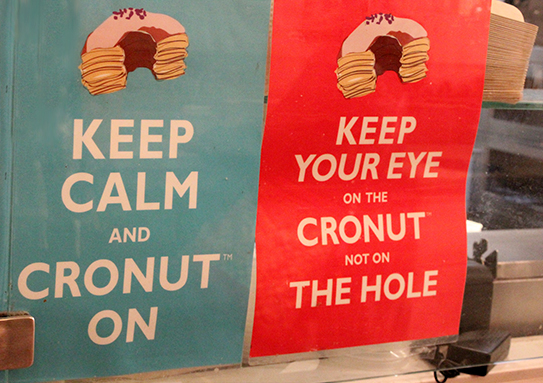
Shake Shack
Shake Shack started out as a small hotdog stand in 2004. It has since grown to become a huge fast-food chain with branches scattered across the United States and Europe, and even in Dubai. Shake Shack has tried to establish itself as a healthier, more ecologically-friendly alternative to chains like McDonald's. They pride themselves on using only 100% quality Angus beef grown with no added hormones or antibiotics, and they use organic products in all their dishes. This is also why they are slightly more expensive than other fast-food chains, and at Shake Shack you won't be able to buy the one dollar burger on offer at the neighboring McDonald's. Their menu offers a wide variety of hamburgers including a veggie burger made of Portobello mushrooms; some people claim that it's the best veggie burger in New York. In addition to hamburgers, Shake Shack also offers hotdogs, fries, a range of milkshakes, and exceptionally delicious lemonade that they make on the premises.
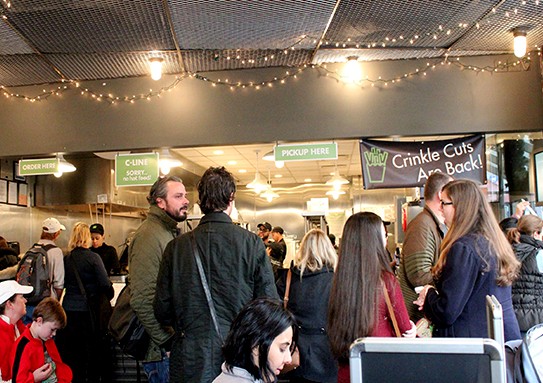
We decided to go with the classic, and we chose a cheeseburger with fries and a soft drink. The hamburger was relatively small, but after the first bite we understood what all the fuss is about. Nevertheless, a patty is a patty, and it's hard to bring much new to the table with a hamburger – but at Shake Shack, they understand that it's not the patty, but rather it's what encases it that matters. And this is why the roll is the real deal – a soft, airy brioche roll that successfully absorbs the juices from the patty without becoming soggy. The crinkle-cut fries are identical to those served at Burger Ranch (of blessed memory), but far tastier. The fries were crispy on the outside and soft on the inside, and it was clearly evident that they were very fresh. The only disadvantage: someone in the kitchen must be in love, because the fries were overzealously salted, but we made do.
Cost-of-living: A meal including a hamburger, fries, and a soft drink will cost you $11. Note that servings are relatively small, so if you're very hungry you should order two hamburgers.
Where in the Big Apple: Branches are scattered throughout New York. Specific locations can be found on their site. The original branch in Madison Square is the most enticing and the most popular, so you'll probably have to wait in line longer there.
Time killed playing Candy Crush: If you don't want a long wait, try to choose less crowded branches. We tried the branch on the Upper West Side on a weekday afternoon, and we waited about 15 minutes for the coveted hamburger. Waits are divided into two components: waiting for the cashier, which is a relatively short wait, and waiting for the food. The cashier gives you a special beeper that vibrates when your hamburger is ready so that in the meantime you can find a place to sit, or so that you can sit without having to wait by the counter for them to call your name on the microphone (sparing you the embarrassment of having them mispronounce your name).
Procession of imitations: There's only one Shake Shack, but there is no shortage of hamburgers in New York. If you really don't feel like waiting in line, you can pop into the brgr where they serve hamburgers made with additive-free quality beef.
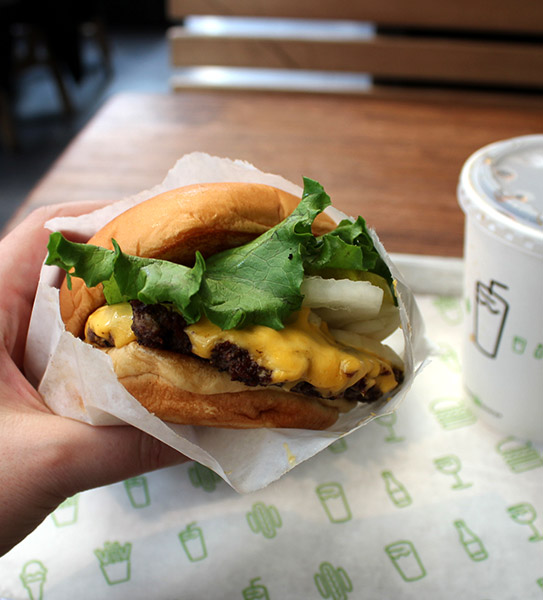
Ramen
In New York they love soup, and most restaurants serve at least one type of soup. There are fast-food chains that serve soup exclusively (like the outstanding Hale and Hearty). That's the way it is when there are only two months a year of real summer. But seeing as soup isn't always filling enough, ramen is a perfect alternative: an entire meal in a huge soup bowl. The ramen is served in a stock cooked slowly for 24 hours. In Japan, they usually use pork stock, but in New York ramen is also available served with chicken stock or vegetable stock for vegetarians. Various vegetables, a variety of fresh noodles, special spice blends, meat, and a hard-boiled egg are added to the stock. As the possible variations are infinite, anyone can assemble the ideal dish.
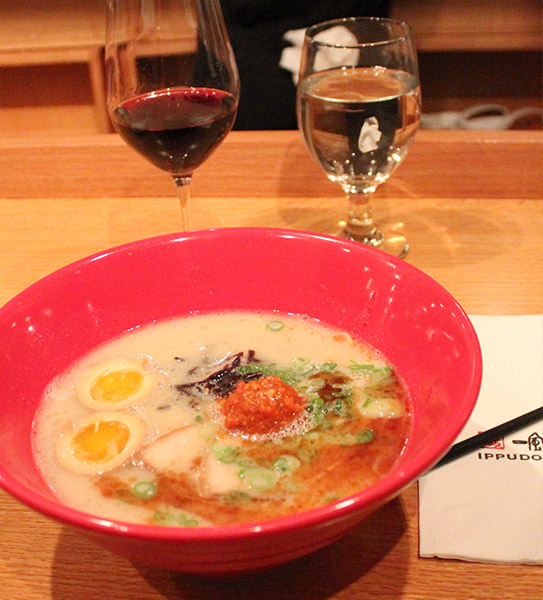
The ramen trend is so prominent in the Big Apple, that some say it threatens to push sushi aside as Japan's most popular food export. At present there are thousands of ramen restaurants – from the cheap stands in Chinatown to upscale restaurants that specialize in authentic ramen from a specific region of Japan. One of the most reputable restaurants is Ippudo, which has become a favorite among chefs looking for a good, simple meal after completing their shift. The chefs recommended, and the masses flooded in (much like Thai House in Israel). Ippudo has become a particularly trendy chain that frequents the first place on the "Best Ramen in New York" list. We popped into the branch in Midtown to decide for ourselves. The design is very alluring and unique, but we're not here to discuss décor. For our first course, we chose the pork buns – juicy buns filled with pork, and incredible chicken wings. For the main course we chose the ramen, of course. At Ippudo, they offer soup based on pork, chicken or vegetable stock (which is also vegan). We chose the pork stock with a special dashi spice, and we added a hard-boiled egg. The piping hot soup came with fresh noodles made on the premises and an aromatic blend of special spices. It was indeed good, quality ramen, with a bold combination of flavors for enthusiasts of the genre. Definitely worth popping in.
Cost-of-living: There are ramen stands where you can buy a huge bowl for $9. While it was slightly more expensive here ($15 for a basic serving without the addition of egg or meat), it's still a worthwhile price.
Where in the Big Apple: Ippudo has two New York branches, in East Village and in Midtown.
Time killed playing Candy Crush: Despite the fact that it is a restaurant, they do not allow reservations. This is how their system works: you arrive, you register, and they tell you how long it'll be before you are seated at a table. They take your phone number and they send you a text message a few minutes before your table is ready, so that in the meantime you can walk around the area or you can sit at the trendy bar. We were given a table about an hour after we registered, and in the meantime we walked around the neighborhood.
Procession of imitations: Try Totto Ramen or the Momofuku Noodle Bar.
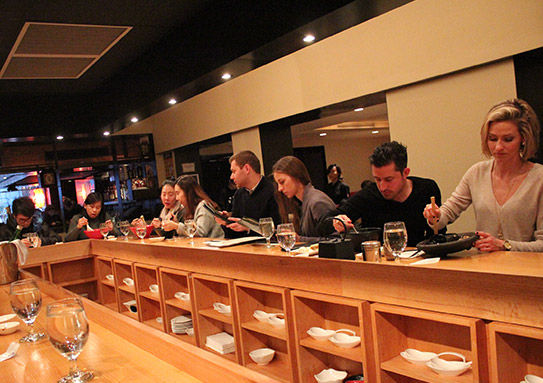
Trucks and Food Stands
No matter where you toss a coin in New York, you're bound to discover street carts selling food. While the tradition started with hotdogs, now you can find almost any food whatsoever sold from food trucks or carts – from stuffed pancakes to pizza prepared on the spot in special ovens located in the trucks. Food trucks have received such high culinary esteem that there is even an award ceremony strictly devoted to street food on wheels. But across all the rankings, there is one street stand that exceeds all the rest – The Halal Guys. They serve pretty simple Oriental-Middle Eastern food based on rice with chicken/lamb. The term 'Halal' refers to the meat permissible for consumption by Muslims, similar to Jewish laws of Kashrut. In New York and in the United States in general, the term 'Halal food' has become a sort of code name for Arab cuisine as a whole.
The small stand started as a hotdog stand in 1990, when the Egyptian owner decided to stand out and sell home-style food that he knew from home. The food quickly began to draw fans, including New York Times critics who hailed the stand as selling the best street food in New York. Since then, the phenomenon has expanded, lines have become longer, and the owner opened a franchise. He now owns several carts scattered throughout New York. The Halal Guys vendors wear bright yellow shirts in order to distinguish themselves from other stands. They have become so well-known and popular, that hundreds of 'Halal food' carts have tried to replicate their success. According to current plans, The Halal Guys will become a real restaurant so that you won't have to wait in line for a portion of rice and meat.
We visited the stand on a rainy afternoon in order to avoid waiting in line, and the line was indeed quite short. We ordered our food after a ten minute wait: a chicken mix and a gyro (lamb rotated on a skewer like shwarma) on rice. We were given a pretty large serving with a generous portion of orange rice, some lettuce, and chopped chicken and lamb. We received a separate serving of yogurt sauce and spicy sauce. And how was the actual food? In truth, we didn't get what the hype was all about. While the rice was good and its color surprising, the meat was dry. Things improved with the yogurt sauce and the spicy sauce, but we grew tired of the dish quickly, and we threw out an almost-full plate. The bottom line is that in Israel, there are cheap restaurants that serve similar, far superior food. So unless you're in the area, you can give this place a miss
.
Cost-of-living: $6 for a serving with meat or vegetarian falafel, a meat sandwich sells for $4.
Where in the Big Apple: They have several carts scattered throughout New York, but the most famous cart is next to the Moma Museum on the corner of 53rd St. and 6th Ave.
Time killed playing Candy Crush: We waited for ten minutes. At peak hours, waiting time can reach half an hour.
Procession of imitations: There are many similar Halal carts scattered throughout New York (as well as a few trying to attract the Halal Guys clientele by setting up a cart directly across them). If you want a different style of food, try one of the food trucks selected as New York's best, or our favorite, Cesar's Empanadas where they make the best burrito of any of those we tried in the city. They also sell amazing empanadas. They're permanently parked opposite the Barclays Center in Brooklyn, right next to Target.
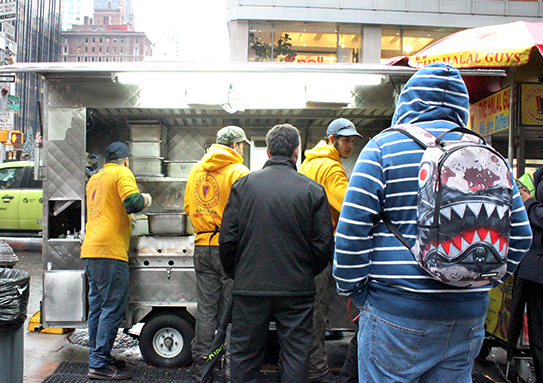
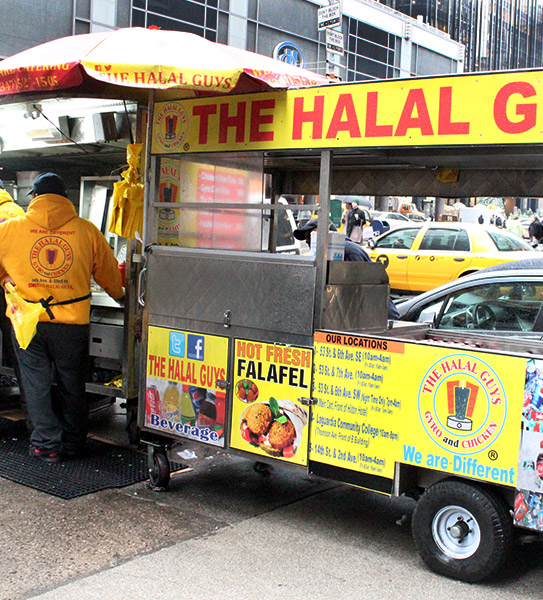
Dim Sum
This trend hit Israel recently and has taken over the local palate, but delectable dumplings have been a staple for quite some time in New York. Dim sum made its way to us from China, and it consists of dough encasing a meat and vegetable filling, which is then either steamed or fried. Each individual dumpling contains an entire world of flavors, and they're usually the size of a delightful bite. Much like sushi, dim sum branded itself in the west as a healthy yet satisfying food; however unlike sushi, it is considered a relatively commonplace street food, like a Chinese falafel. Dim Sum made its way to New York with the Chinese immigration to the United States. There is currently an abundance of dim sum restaurants and simple dim sum food stands in the Chinatown area. But Dumplings didn't strictly stick to the realm of street food. They also made headway into the menus of upscale restaurants throughout Manhattan and Brooklyn, where they serve sophisticated variations of dim sum (try Red Farm). And of course, we can't get by without a twist combining dim sum with another Cronut-like food: meet the pretzel dim sum, which combines a crispy dough encasing fillings such as roasted pork.
But dim sum is nevertheless a street food. So we popped in to experience the source: Chinatown, where you can buy a huge bowl of dumplings for $5. One of the better known stands in Chinatown is Prosperity Dumplings. In a small five-chair stand, we ordered pork and chive dumplings, soup with shrimp dumplings, and soup with chicken dumplings. We also snacked on fried vegetable dumplings. Portions were huge (about 10-15 dumplings per portion), and the entire meal came to less than $13. The pork dim sum was the tastiest and the most flavorful, impeccably spiced and extremely fresh (you can see women in the kitchen meticulously preparing the dumplings by hand). The shrimp dumplings looked like small clouds floating in the soup, but as soon as we bit into them, we came to realize that they were quite anemic and lacked prominent flavor. The chicken dumplings were quite standard, but their saving grace was the soup they were floating in – a rich, flavorful stock, the type your grandmother would make for you when you were sick. The fried dim sum were a perfect snack, as expected. We left feeling stuffed, and we ended up taking most of the huge meal home.
Cost-of-living: $3-$5 per 10 dumpling serving.
Where in the Big Apple: 46 Eldridge St.
Time killed playing Candy Crush: When we arrived, the line was quite short, and we only waited about 10 minutes before being served.
Procession of imitations: Dim sum can be found in every hole in New York, but only a few restaurants stand out. Another recommended restaurant in Chinatown is the Nom Wah Tea Parlor. If you feel like something a bit more upscale outside of Chinatown, you have to try Red Farm.
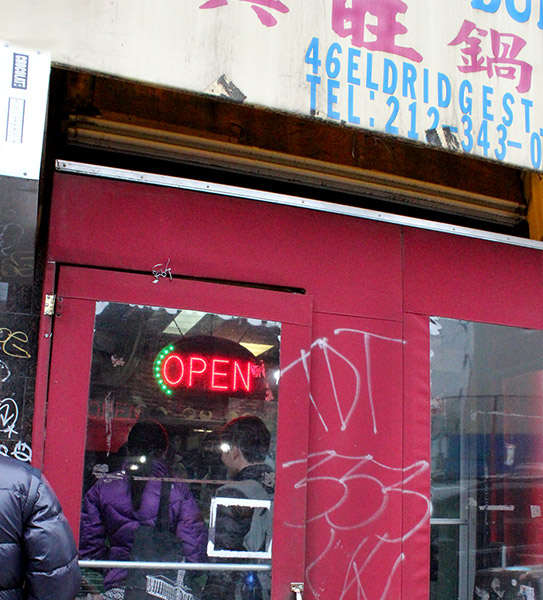
Ramen Burger
The recent mashup declared 'the next Cronut' was apparently inspired by a consolidation of two foods that seem unrelated – the ramen trend and the classic hamburger. The food, invented in 2013, was granted extensive PR and became an overnight sensation, with crazy long lines forming in front of the famous stand in Brooklyn's food market.
Chef Keizo Shimamoto saw the success and decided to open his own restaurant in South Manhattan.
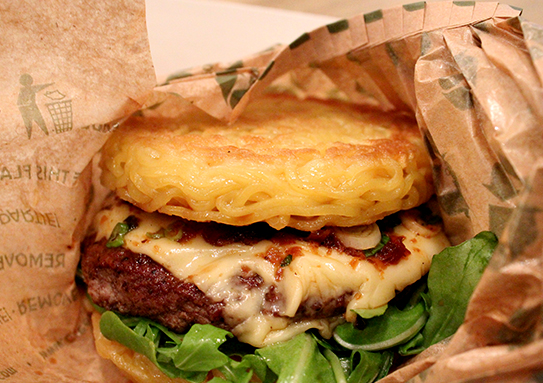
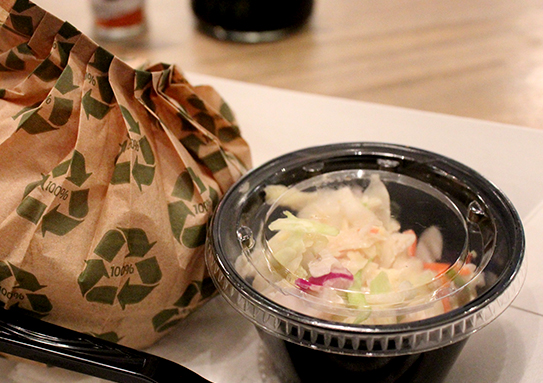 Photos by: Miri Perks
Photos by: Miri Perks
Since then, the craze has waned, and people have ultimately come to understand that after all, it's a burger encased by fried noodles. The most authentic place offering the ramen burger is the Smorgasbord Food Market in Brooklyn that's worth a visit for food enthusiasts in its own right.
Since the market is closed during the winter months, we popped into the restaurant. To our surprise, we discovered a pretty desolate place in the financial district designed like a fast-food restaurant. They offer a variety of ramen soups and bento boxes, but we had come with a purpose. We ordered and were served quite quickly – a cute package within which lied a pretty small hamburger alongside a small serving of coleslaw (you can order fries as well). The 'bun' made of noodles was very wet and oily. We bit into this strange concoction and were surprised to discover that it has the unique taste of ramen with bold Asian flavors. The noodles were soft and tasty despite being a bit oily. The burger itself was thin and made with high-quality meat. We finished the hamburger pretty quickly, and we moved onto the coleslaw that tasted tired and stale. Bottom line: if you're in the area and you really like ramen and/or burgers, try the strange trend, but we have a feeling that this craze won't last long.
Cost-of-living: The basic hamburger costs about $8.
Where in the Big Apple: The Ramen.Co restaurant is located on 191 Pearl St. The Smorgasbord Food Market in Brooklyn moves around; it's worth checking online before leaving the house.
Time killed playing Candy Crush: There was no line at all for the restaurant. In the food market lines can take between 10-40 minutes.
Procession of imitations: Shimamoto trademarked the name 'Ramen Burger' causing most restaurants to avoid imitating it. Nevertheless, people claim the creation can be replicated at home. Good luck with that.

